Crochet boots for beginners with step-by-step descriptions and diagrams. Crochet booties-boots: photo, description, recommendations Crochet booties-boots pattern with description
Knitting boots for indoors or outdoors is not that difficult, especially if you don’t use complex patterns when creating them. How to crochet boots for beginners with a step-by-step description and diagrams, see below.
Preparing materials
First you need to prepare the necessary materials. The yarn can be wool, half-woolen, acrylic, cotton, mixed. It is selected depending on the time of year for which the boots are knitted, their patterns and models. The hook should be the same thickness as the thread, or 1.5 times larger.
The pattern layout may vary. There are some very difficult ones for experienced craftswomen and very simple ones for beginners.
The more yarn overs in the pattern, the more openwork the product will be. Such models are best chosen for summer.
Boots can be made from ready-made motifs, for example, from granny squares. For them, you need to tie on the required number of fragments in advance and connect them to the sole and to each other using thread and needle or connecting posts.
The sole can be simply tied. But you can use denser materials. For example, leather, felt, rubber.

For boots with insoles, you need to purchase them a size larger than your desired size. Use an awl to make holes at a distance of 0.5 cm from the edge of the insole and from each other. Through the resulting holes, tie the entire insole along the edge with single crochets. At the same time, knit 2 stitches into each hole. The insole can be tied with yarn on top to make it softer and denser. You can also add padding polyester between the leather and the knitted layer. This is especially true in boots for a baby.
More often, for these purposes, not a leather insole is used, but a felt one. It is also selected one size larger and tied in the same way. For boots with felt soles, synthetic winterizer may not be used.

If you are knitting shoes for the street, then the soles can be borrowed from sneakers or slippers. It is desirable that it be rubberized. Then it is easy to pierce it with an awl and tie it.

For the little ones
Knitted boots for babies are called booties. They can be thin and lacy for summer or thick and warm for winter. These shoes are especially suitable for newborns - warm, comfortable, light. The sole can be simply knitted or felt. The yarn is as natural as possible, but not prickly, but soft.
Step-by-step description with photos:

Cast on 15 chain stitches (VP). Insert the hook into the 4th loop of the chain from the hook and knit 3 rows according to the pattern:

Using a different color, knit a single crochet loop in each stitch. As a result, there should be 56 loops. Knit the fifth row in the same way.


Using the color used to knit the sole, start knitting the cones (2 VP, 2 unfinished stitches, 1 VP).

Skip 1 stitch and knit another cone. Connect 1 VP. And thus finish the entire row.

Also knit row 7.


Having marked the middle, start knitting the toe with white yarn. Insert the hook into the back wall of the loop and knit a white cone from 2 unfinished loops. Next, knit them from 3 unfinished loops to the middle. There should be 14 pieces. Knit the last cone from 2 unfinished loops.

Unfold the knitting and continue knitting cones (7 pcs.). Connect them.


Tie 4 cones. Finish the row in the same way.

In this way, knit 2 more rows and change the color. Knit 3 VPs in each stitch.



For adults
This master class covers knitting boots from hexagons. The boots are suitable for adults. The size can be changed by increasing or decreasing the hook number.

Pattern and description of knitting motif:

Pattern and description of knitting the sole:

Assembly and diagram of the top bar:

This model can be of any desired height. Depending on the number of motifs, footprints or boots are obtained.
Grandma's way
Another way to knit boots from motifs is to use granny squares. Patterns for knitting them can be any complex or simple, plain or multi-colored.

First you need to tie a felt insole. Knit 3-4 rows of single crochets.

Knit 26 motifs using the pattern you like. For each boot you will need 13 pieces. For foot size 37, the squares should have a side of 8 cm. Examples of patterns:



In this master class, 8 pink and 18 gray motifs are knitted. Two gray squares have 2 sides tied with an additional row of double crochets.

Arrange the motives as in the figure:

Sew the squares into stripes, and then the strips together. Between motifs 9 and 12, sew one of the squares with an additional row of double crochets.
If suddenly the boots are a little small, using the same square they can be enlarged by adding rows of double crochets.

Sew the boot to the sole using an overcast stitch from the wrong side. Tie the top of the boot with a reverse row of single crochets.
UGG booties. Description of crochet (for ages 0-6 months). Crochet pattern of elongated (long) loops. Children's feet size chart.
Knitting booties is a very pleasant and interesting activity. In my opinion, this is no less pleasant and interesting than receiving such booties as a gift.
I knitted these cute booties in the shape of Ugg boots for my work colleague who is expecting a baby in early December. I thought that these warm booties would be just right for the cold season.
The presence of a full-fledged clasp on these booties makes them more versatile and convenient to use, because it’s not so easy to put on high shoes on small restless legs :)
If you, like me, are planning to knit booties as a gift, then you will definitely need it.
To crochet booties we will need (for sizes 0-6 months):
Beige yarn (Schachenmayr Idena Plus, 100% acrylic, 50 g. = 133 m.) - approx. 50 gr. An analogue of this yarn on the Russian market is acrylic yarn Comfort YarnArt
- remnants of dark brown and white yarn (for the sole);
- hook No. 3.5;
Designations:
VP= air loop;
sc= single crochet;
dc= double crochet;
pssn= half double crochet;
ss= connecting post;
increase (from hdc or dc)= 2 stitches (hdc or dc) in one loop;
decrease= knit 2 single crochets together as shown in the picture below:

Description of knitting booties:
Sole:
1st row: 10 ch, 3 ch rise, 1 dc in the 4th loop from the hook, 8 dc, 7 dc in the first loop of the chain, turn the knitting and tie the chain from the ch on the reverse side, knitting 8 dc, 5 dc in the initial loop row, 1 ss;
2nd row: 2 ch rises, 1 hdc in the same loop, increase from hdc, 4 hdc, 5 dc, 6 increases from hdc, 5 dc, 4 hdc, 4 increases from hdc, 1 dc;
3rd row: 2 ch rises, 1 hdc in the same loop, 1 hdc, 1 hdc increase, 5 hdc, 5 hdc, (1 hdc increase, 1 hdc) * 6 times, 4 hdc, 5 hdc, (1 increase from hdc, 1 hdc) * 3 times, 1 increase from hdc, 1 dc.
Row 4: knit 2 sole pieces (I used brown yarn for the outer part and white yarn for the inner part):

Attach the resulting sole part to thick cardboard (or plastic), trace along the contour and cut out a template for the sole:

Then place the sole parts wrong sides together and place the cardboard template between the parts:

Next, knit the parts together with single crochets, using brown yarn and hooking the outer (brown) part of the sole only on the back wall of the loop, and the inner (white) part on both half-loops:

Rows 5-9 (5 rows): switch to knitting with beige yarn and knit in the round without increasing or decreasing [=54]

10 row: 9 sbn, (decrease, 1 sbn) * 6 times, 13 sbn, decrease, 4 sbn, decrease, 6 sbn, [=46]
Please note that in this row the first 6 decreases are knitted on the toe of the bootie and should be distributed evenly. The last 2 decreases are knitted in the heel area.
After the 10th row, you need to start forming the fastener bar and move from knitting in circular rows to knitting in straight and reverse rows. In this case, the right and left shoes are then knitted differently.
For the right shoe:
11th row (incomplete front row): 7 sc, 7 decreases, 5 sc, turn knitting over,
Row 12 (wrong): ch 1 rise, 5 sc, decrease, 2 sc, decrease, 27 sc, turn knitting over,
13th row (knit): 1 ch rise, 3 sbn, 22 elongated loops, decrease, 2 sbn, decrease, 3 elongated loops, 1 sbn, turn knitting over,
Row 14 (purl): knit sc to end of row [=34]
Next, knit without decreasing and repeat the last 2 rows until the desired height of the bootie (I got 5 repetitions)
This is what a knitted bootie toe looks like:

For the left shoe:
11th row (incomplete front row): 3 sc, unfold the knitting and knit in the opposite direction:
Row 12 (wrong): 1 ch up, 1 sc in the same loop, 25 sc, 7 decreases, 5 sc, turn knitting over,
Row 13 (knit): 1 ch rise, 1 sbn, 4 elongated loops, 1 sbn, decrease, 2 sbn, decrease, 1 sbn, 22 elongated loops, 3 sbn,
Row 14 (purl): turn knitting over, 25 sc, decrease, 2 sc, decrease, 5 sc.
Row 15 (knit): 1 sc, 30 elongated loops, 3 sc
Row 16 (purl): turn knitting over, sc to end of row [=34]

To form the strap for the fastener, tie the edge of the shoe with sc:
1st row: (from the top edge of the bootie in the direction of the sole) sc to the end of the row (in my case 15 sc), I recommend knitting the last stitch of this row as a connecting stitch, hooking the thread through the other side of the fastener - this will create a small overlap at the junction of the bar and the boot .
2nd row: (we form holes for buttons): 4 sc, 3 ch, skip 2 loops of the previous row, 4 sc, 3 ch, skip 2 loops of the previous row, 3 sc
3rd row: 3 sbn, 2 sbn in a ch arch, 4 sbn, 2 sbn in a ch arch, 4 sbn,
4th row: 15 sc, break thread
Sew buttons.
Booties are ready!
See also other models of knitted booties:
It seems to me that all women, without exception, especially enjoy knitting children's clothing. How nice it is to dress up little ones in miniature things knitted from soft multi-colored yarn.
Today I invite you to master a new master class with step-by-step photos and videos and crochet booties for your beloved little relatives. On the eve of spring, I really want to please them with new clothes, warm and cozy shoes.
I thought for a long time about how to crochet booties. I went through many simple and complex schemes and finally settled on the presented option. I'm sure the girls will love the gift. These crocheted booties will look great with spring dresses and skirts, and the child will feel cozy, warm and elegant in them.
For knitting we need yarn of two colors and a hook No. 2.5. I knitted from Pekhorka "Children's Novelty" yarn (composition: 100% acrylic, 50 g/200 m).

The sole size of my booties is 9 cm. I knit quite tightly. The size of the sole of the booties depends on your yarn, hook number and individual knitting density; some knit tightly, others loosely. If you end up with a large sole size, use a thinner yarn or use a smaller crochet hook. Or vice versa. Experiment with yarn and crochet.
Knitting pattern for bootie soles:

I already knitted the same sole in the master class "".
We knit a chain of 15 chain stitches.

1st row: In the 4th loop of the chain from the hook we knit 2 double crochets.


In the remaining loop we knit 6 double crochets.

Then we knit 10 double crochets symmetrically, 1 stitch in each loop.

In the very first loop in which we knitted 2 double crochets, we knit 3 more double crochets

and close the row with a connecting loop, which we knit into a 3rd lifting air loop.

2nd row: we knit 3 lifting chain stitches and in the same base loop we knit 1 double crochet,

in the next 2 loops we knit 2 double crochets,

in the next 10 loops we knit 1 double crochet in each loop,

in the next 6 loops we knit 2 double crochets,

again in the next 10 loops we knit 1 double crochet

and in the remaining 3 loops we knit 2 double crochets,

We close the row with a connecting loop into a 3rd lifting air loop.

3rd row: we knit 3 lifting chain stitches and in the same base loop we knit a double crochet,

in the next loop we knit 1 double crochet,

in the next loop we knit 2 double crochets, in the next loop - 1 double crochet, in the next loop - 2 double crochets, in the next loop - 1 double crochet,


*in the next loop we knit 2 double crochets, in the next loop - 1 double crochet*.

Repeat knitting from * 5 more times.

In the next 10 loops we knit 1 double crochet.

Next we repeat from * 3 more times, i.e. in the next loop we knit 2 double crochets, in the next loop - 1 double crochet, in the next - 2 double crochets, in the next - 1 double crochet, in the next - 2 double crochets and in the next loop - 1 double crochet.

We close the row in the 3rd air lifting loop, knit a connecting post. The sole of the bootie is ready.

4th row:

We will knit this row behind the back wall of the loop, starting from the second loop of the base, insert the hook into each loop behind the back wall of the loop and knit 1 half double crochet.

There should be 56 half double crochets in this row (we count 2 lifting chain stitches as 1 double crochet). We close the row with a connecting post, which we knit into the second lifting air loop.

5 row: we knit 1 chain lifting loop, turn the knitting clockwise, insert the hook into the same base loop and knit the first single crochet (in this row we do not count the lifting loop as a stitch), in this row we knit loops on both walls, in each loop with 1 single crochet.

You should get 56 single crochets.

We close the row with a connecting loop, which we knit into the first single crochet of this row.

6th row: we knit 2 air lifting loops,

Turn the knitting clockwise and knit 15 half double crochets, 1 half double crochet in each loop. (We start knitting half-columns from the second loop of the base; we do not knit a half-column into the first loop of the base, into which 2 air lifting loops are connected).

Counting 2 lifting chain stitches, we knitted 16 half double crochets,


We knit 2 double crochets with a common top 12 times, * those. in the next loop we knit a double crochet without tying it to the end, we have 2 loops left on the hook, in the next loop we also knit a double crochet without tying it to the end, we have 3 loops left on the hook, then we knit these 3 loops together at one time.*



Then, to the end of the row, we knit 16 half double crochets and close the row with a connecting stitch in a 2nd chain lifting loop.

7th row: we knit 1 air loop, turn the knitting clockwise and, starting from the first loop of the base, knit 1 single crochet in each loop.

This row should make 44 single crochets. We close the row with a connecting stitch, which we knit into the first single crochet of this row.

8th row: we knit 2 air lifting loops,

turn the knitting clockwise and knit 15 half double crochets (1 double crochet in each loop),



We knit 2 double crochets with a common top 6 times.


then we knit 16 half double crochets to the end of the row.

We close the row with a connecting post into a 2nd air lifting loop.

9th row: we knit 1 chain lifting loop, turn the knitting clockwise and knit 1 single crochet in each loop. This row should make 38 single crochets.

We close the row with a connecting stitch, which we knit into the first single crochet.

10th row: we knit 2 air loops, turn the knitting over and knit 15 half double crochets (1 double crochet in each loop),


we knit 6 double crochets with a common top, i.e. we knit 6 unknitted double crochets, there should be 7 loops on the hook, we knit these 7 loops at a time.


until the end of the row we knit 16 half double crochets (1 double crochet in each loop). We close the row with a connecting post into a 2nd air lifting loop.

11th row: Let's start knitting a pattern that we will knit according to this pattern:

We no longer turn the knitting over, we knit 1 air loop for lifting and in the same base loop we knit 1 single crochet, in the next loop we knit another 1 single crochet,


We skip 1 base loop and knit 1 single crochet into the next 2 loops,

knit 3 air loops again,

we knit from * to the end of the row, i.e. * We skip 1 loop and in the next 2 loops we knit 1 single crochet, then we knit 3 air loops*.

We close the row with a connecting stitch, which we knit into the first single crochet of this row.

Row 12: to move on to knitting from an arch, we will knit 2 more connecting posts,


**,

So we knit from * to the end of the row. We close the row with a connecting stitch into the first single crochet.

Row 13: to switch to knitting from the arch, we knit 1 more connecting stitch and knit a row in the same way as the 12th row, i.e., we knit 1 air lifting loop, we knit a single crochet into the arch, 3 chain loops and 1 more single crochet into this the same arch.

*in the next arch we knit a single crochet, 3 chain stitches and another 1 single crochet in the same arch*, we knit like this from * to the end of the row and close it with a connecting stitch into the first single crochet.

All subsequent rows are knitted in exactly the same way to the desired bootie height. I knitted 12 side by side with this pattern.

After this, the thread of the main color can be cut.

We tie the last row and the sole of the bootie with single crochets using white thread. Insert a hook into any top of the single crochet stitch of the previous row, knit 1 single crochet stitch and into the same base loop we knit 1 single crochet stitch, into the arch we knit 3 single crochets and into each top of the previous row we knit 1 single crochet stitch. .

We close this row with a connecting stitch into the first single crochet.

In the same way, we will tie the sole of the bootie around the perimeter, knitting 1 single crochet into each loop.

The second bootie is knitted exactly the same way.

Let's hide all the ends of the threads and decorate the boots to your taste. You can thread a lace

Crochet cap.
If you want to receive the latest articles, lessons and master classes from the site to your mailbox, then enter your name and e-mail in the form below. As soon as a new post is added to the site, you will be the first to know about it!
Girls, hello everyone!!
Today I suggest you knit together boots for our kids for the cold season. There was no survey, let's get straight to the point. There are a lot of color variations, here is what I found on the Internet:








Outsole pattern:

And this is a diagram of the main pattern:

It is quite tricky, so for those who have not encountered such circles and ovals, I suggest you take a look at this video. It is in a foreign language, but there is a good picture, so it will be easy to understand.
http://www.youtube.com/watch?t=2&v=49QVa012PX8
There are also photos that show where to insert the hook (just in case):










There is a description of the procedure for knitting booties:
Having finished knitting the sole, we do not tear off the thread, but continue knitting the toe sc for the lower part of the sole loop (1 row)
Then we proceed to knit the main pattern according to pattern No. 2 with crochet No. 2, 5. 2 row: 34 C (column) of the pattern (5 loops on the hook, knit behind the bottom slice of the bottom row)
3rd row: 69 RLS (single crochet) (for both pieces of the bottom row)
4th row: 9 C of the pattern (5 each), 2 C of the pattern (6 each), 7 C of the pattern, 2 C of the pattern (6 loops each), 12 C (5 each) of the main pattern.
Row 5: 65 RLS
6th row: 9 C (5 each) of the pattern, 2 C of the pattern (7 loops each), 1 C of the pattern (9 each), 2 C of the pattern (7 each), 12 C (5 each) of the main pattern.
Row 7: 53 RLS
8th row: 9 C (5 each) of the pattern), 2 C of the pattern (8 each), 12 C of the pattern (5 each)
9th row: 47 RLS
10th row: 9C pattern (5 each), 1C pattern (7 each), 12C pattern (5 each)
10 Next we finish knitting the toe of the bootie.
Then, from the wrong side, we attach a thread from the middle (mark it in advance with a marker), and knit a circular row of sc to the middle, which we marked.
2nd row: 21 From the main pattern (5 loops per hook)
3rd row: 43 sc for the bottom slice
4th row: 21 From the pattern (5 loops each 5th row: 43 RLS
Row 5: 43 RLS
6th row: 21 From pattern to (5 loops)
This is where we finish knitting the boots.
We take a thread of a different color and attach it to the boot by the loop segments (as shown in the video http://www.tejiendoperu.com/crochet/botitas-para-bebe/)
1st row: 20 RLS
2nd row: 2 sc in one sc in the bottom row (start adding stitches), 18 sc, 2 sc in one loop
3rd row: 22 RLS
4th row: 2 sc in one column, 20 sc, and again 2 sc in one loop
5th row: 24 RLS
6th row: 2 sc in one loop, 22 sc, 2 sc in one loop.
Row 7: 26 RLS
8 row: 2 sc in one loop, 1 sc, then make 3 chain loops and attach to 4 sc in the bottom row, 18 sc, again make 3 chain loops and attach to 2 loops from the edge, 2 sc in the outer loop
Row 9: 28 RLS
10th row: 2 sc in one loop, 26 sc in one loop, 2 sc in one loop
Row 11: 30 RLS
This is how we finish knitting the strap and sew on the buttons.
And we tie the bottom of the sole with a half-column.
Well, that seems to be all there is to the description. In principle, nothing is complicated, everything is described in great detail, so don’t be afraid, don’t be shy, let’s get started!!!
Now about my strings. I will knit from "Children's Novelty Pekhorka" (white) and "Acrylic Pekhorka" (blue). The hook I chose was 2.25 mm

The sole I got was 11.5 cm (for a 7 month old baby). Then I switched to a row of st. bn. After the main pattern, I knit a row not with single crochets, but with half double crochets. Here, everyone chooses for themselves, as they like. This is what we have at the moment:


I knitted one bootie, and this is what happened. Bottom tied st. bn.


I knitted the clasp separately and then simply sewed it on.

And this is what happened in the end:

Girls, good luck to everyone! Join us, I'm waiting for your photos!!!
It is no secret that when a baby appears in the house, the life and habits of all family members radically change. Therefore, many knitters who have not previously thought about making such products as crocheting open page after page on the Internet in search of suitable patterns.
It won’t take long to get confused among the abundance of offers, but in reality the task is not particularly difficult.
What are the benefits of voluminous booties?
Crochet booties are not very different from all other types of booties. Their design is almost the same:
- Hard sole.
- A clear outline separating the vertical part.
- Quite a tall and dense leg.
Often, such boots are knitted to imitate features characteristic of famous shoe brands, such as emblems, colors, special placement of stripes or decorative details. With your imagination, you can knit ones that will resemble sneakers, Ugg boots or sneakers.
Each of these models is developed individually, so do not be surprised that a detailed diagram cannot be found. However, there are principles on which the manufacture of most booties is based. These are the ones that will be discussed in this article.
Crochet booties: master class, step-by-step description
It is useless to give the dimensions of the product and the number of loops due to the fact that each material has its own specifics: thickness, weight, hairiness, torsion. These parameters largely affect the density of the fabric. In order for the finished products to fit, you should take the necessary measurements in advance and check them during the knitting process.
Initial stage: sole
First of all, you need to make a hard sole. To do this, knit an oval, focusing on the following diagram.

Particular attention should be paid to the expansion of the canvas. If done incorrectly, you will not be able to achieve a level plane. A deformed canvas will negate all efforts, since the finished booties (crocheted) will look sloppy. A wonderful way to preserve the shape is to knit two identical ovals. Between them, place a piece of the same size cut out of thick cardboard and sew both ovals together with the last row of single crochets. True, these should be protected from water. As an option for moisture protection, you can use a piece of genuine leather sewn onto the bottom of the sole.
The transition from knitting the sole to the top of the booties is that the first row of the side part is made with the hook placed not under both “braids” of the previous row, but only under one, the inner one. In the photo, this row is knitted with white thread. The untied “pigtail” remaining outside forms a voluminous scar. If desired, the effect can be enhanced by tying an additional row of single crochets or “crawfish step” on top.
Crochet booties: knitting pattern for the upper part
The side of the booties is knitted as tightly and tightly as possible. It should be tough, like real boots. To obtain such a fabric, you can use a smaller hook or take the thread in several folds.
Knitted household items can be openwork) should not be as dense as a product intended for walking on the street. For the booties in the photo, a rather openwork pattern is used, but it is compacted by a large number of lush columns.

So, the side part is knitted to a height of no more than three centimeters. The rows are performed without additions, evenly.
When the height of the canvas is sufficient, it is time to move on to the next stage.
Shaping the toe of the booties
Next you need to knit a closed sock. To do this, you should use the same technique with which the sole was separated from the side part: a volumetric row. Only now it needs to be done not along the entire perimeter of the canvas, but only on half of it. Simultaneously with picking up only one “braid”, you need to take care of cutting the fabric. This action should be performed evenly in three places in the row.

Having knitted the first row, you should turn the knitting and perform the second (return). Don't forget to reduce the number of columns. The result should be a perfectly semicircular sock.
Knitting a pagolenka
Now it’s a small matter: in one circular row you should connect the flat edge of the semicircular toe and that part of the side part that will be located above the heel. The resulting row serves as the basis of the pagolenka. All other rows are knitted exactly until the booties of the required height are obtained. It is desirable that the leg also has good rigidity.
The upper edge can be decorated with openwork trim, ruffles, beads or any other decor. To ensure that crocheted booties (the description is given for the little ones) do not fall off the feet and stay more tightly, you can provide them with elastic bands or laces.

Making lace-up boots
By adding a few simple steps, you can get funny crochet booties. The master class described above should be repeated, including the second point (knitting a semicircular sock). Further technologies differ. To make a “tongue”, it must be knitted separately; its fabric should not be too dense. Then, in return rows, form the sides of the booties. At the final stage, you should make a lace (or use a real one) and lace up the booties.
To decorate such a model, you cannot use openwork or lace trim. Here only even rows, or, in extreme cases, unobtrusive cloves of a “crawfish step” would be appropriate.
Latest site materials
Experience
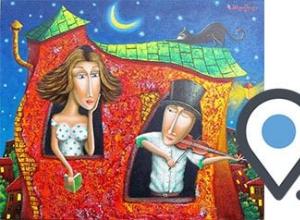
The best ways to find your soulmate
Your task is not to look for love, but to simply look for the barriers within yourself that prevent it - Rumi.
Cosmetology

“Soulmate, you say? I thought all the good candidates were already taken! And what if my soulmate is already married and
What kind of fairy tales are needed for children under one year old?
Horoscope
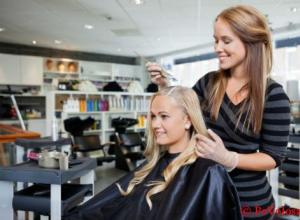
Do you like reading short fairy tales for children? But this is very beneficial for those who do not really like to read or tell fairy tales. After all, a short fairy tale for children takes very little time, but conveys the plot of the fairy tale almost completely! Well, what about fans of sk
How to remove yellowness from hair after dyeing
Cooking
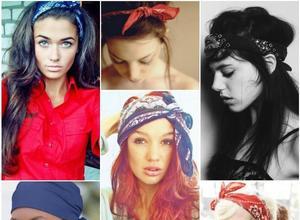
When it’s too late to blame someone, you need to figure out as quickly as possible how to remove yellowness from your hair after unsuccessful dyeing. If you procrastinate, the situation will only get worse and the roots will grow back. Therefore, arm yourself with our advice - and go ahead.
How to sew a bandana on your face
Experience
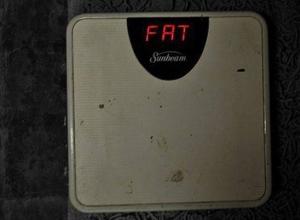
This master class is designed for a person with minimal experience in sewing and basic skills in working with sewing equipment. Step-by-step descriptions and photographs will allow any mother to sew her child a fashionable bandana for the summer with a minimum of material costs. You
BMI (body mass index) calculator: calculate for men and women
Health
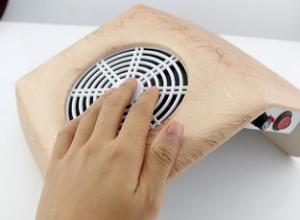
Ideal weight is an average standard that is calculated based on data from a large number of people. But all people are different. Lifestyle, food culture, nationality and body type - all this influences ideal weight. For example, normal weight people
How to quickly dry nail polish: simple tips How to dry nails in water